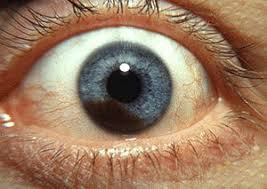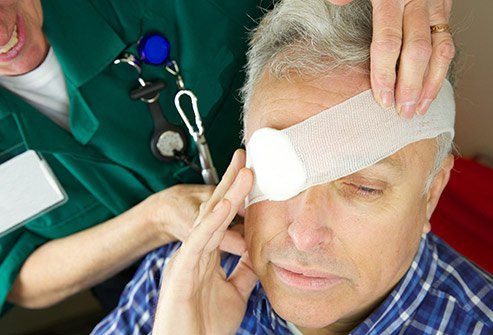Definisi
Presbiopia merupakan kondisi di mana seseorang tidak dapat melihat benda dengan jelas akibat proses penuaan. Presbiopia berasal dari Bahasa Yunani yang berarti “old eye” atau “mata tua”. Hal ini akan terjadi pada semua orang sejak usia 40 tahun. Hal yang pertama kali dirasakan oleh seseorang yang mengalami presbiopia adalah sering memundurkan buku atau koran yang sedang dibaca.
Penyebab
Presbiopia merupakan proses alamiah akibat penuaan pada mata yang dapat dikoreksi dengan baik. Presbiopia merupakan kondisi hilangnya kemampuan mata untuk memfokuskan objek yang berjarak dekat. Presbiopia tidak dipengaruhi oleh kondisi mata sebelumnya, baik itu hipermetropia maupun miopia.
Faktor Risiko
Walaupun faktor utama dari presbiopia adalah usia, beberapa obat dan penyakit dapat mempercepat proses presbiopia sehingga terjadi pada populasi di bawah 50 tahun. Jika Anda belum berusia 40 tahun namun sudah mengalami keluhan tidak dapat fokus melihat benda yang dekat, Anda mungkin memiliki penyakit lain yang perlu diperiksa lebih lanjut. Faktor risiko dari presbiopia prematur antara lain:
- Obat-obatan ADHD, obat anti-ansientas, anti-depresan, anti-psikosis, dan diuretik, yaitu salah satu jenis obat hipertensi.
- Penyakit, seperti diabetes, multiple sclerosis, dysautonomia
- Riwayat trauma kepala
Gejala
Gejala yang dikeluhkan oleh penderita presbiopia antara lain adalah:
- Memundurkan bahan bacaan ketika sedang membaca
- Mata buram dalam jarak baca normal
- Nyeri kepala ketika melakukan hal-hal dengan jarak dekat
- Nyeri pada daerah mata
- Kesulitan membaca utamanya pada sore hari
- Lebih suka membaca pada kondisi terang
Diagnosis
Diagnosis presbiopia dilakukan oleh dokter dan ditegakkan dengan melakukan pemeriksaan refraktif untuk menilai kemampuan melihat dekat dan melihat jauh.
Jika Anda memiliki risiko tinggi mengidap penyakit mata, seperti adanya riwayat glaukoma pada keluarga, Anda perlu melakukan pemeriksaan mata secara berkala setiap 1–2 tahun sekali mulai usia 40 tahun. Jika Anda tidak menggunakan kacamata, lensa kontak, tidak memiliki riwayat penyakit mata di keluarga, maka Anda dapat melakukan pemeriksaan mata mulai usia 40 tahun dengan rincian sebagai berikut:
- Pemeriksaan awal pada usia 40 tahun
- Setiap 2–4 tahun sekali pada usia 40–54 tahun
- Setiap 1–3 tahun sekali pada usia 55–64 tahun
- Setiap 1–2 tahun sekali pada usia di atas 65 tahun
Tata Laksana
Penanganan presbiopia dilakukan dengan memberikan lensa cembung atau plus untuk membawa bayangan ke retina kembali.
Kacamata baca
Jika Anda hanya memiliki gangguan presbiopia, maka Anda hanya perlu memperbaiki kondisi presbiopia dengan menggunakan kacamata baca. Kacamata baca dapat membantu memperbaiki penglihatan jarak dekat dengan membelokkan cahaya sebelum masuk ke mata. Bagian atas dari lensa tersebut berfungsi untuk melihat dalam jarak jauh. Lensa trifocal berfungsi untuk untuk pandangan jarak dekat, jarak sedang, dan jarak jauh.
Lensa kontak
Beberapa orang lebih memilih menggunakan lensa kontak dibandingkan kacamata. Beberapa tipe lensa kontak yang dapat digunakan untuk menatalaksana presbiopia adalah:
- Lensa kontak monovision, memperbaiki penglihatan dalam jarak dekat
- Lensa kontak multifocal, lensa yang memiliki zona dengan kekuatan lensa yang berbeda. Dengan lensa ini, Anda dapat melihat dalam jarak jauh maupun jarak dekat.
Operasi
Operasi refraktif, beberapa orang lebih memilih untuk melakukan operasi untuk memperbaiki penglihatan sehingga tidak perlu menggunakan kacamata untuk melihat jauh dan melihat dekat. Dengan laser, dokter mata Anda akan memperbaiki bentuk kornea sehingga dapat digunakan untuk melihat jarak jauh maupun jarak dekat. Sebelum melakukan operasi LASIK, mungkin dokter mata Anda akan menawarkan untuk menggunakan lensa kontak monovision untuk melihat kenyamanan Anda ketika menggunakan lensa kontak tersebut.
Komplikasi
Presbiopia yang tidak diperbaiki dapat menurunkan kualitas hidup, karena kesulitan melakukan aktivitas sehari-hari dan membuat sakit kepala serta rasa tidak nyaman di sekitar mata. Jika presbiopia ditangani maka keluhan ini akan berkurang.
Pencegahan
Presbiopia tidak dapat dicegah karena merupakan kondisi natural akibat penuaan. Namun, terdapat beberapa langkah untuk dapat menjaga kesehatan mata Anda, antara lain:
- Menggunakan cahaya yang cukup untuk mengurangi pegal pada mata
- Melakukan pemeriksaan mata secara berkala
- Mencatat keluhan yang dialami
- Mengonsumsi makanan yang seimbang dan kaya sayuran hijau
- Selalu berolahraga
- Mengonsumsi air putih dengan cukup
- Membatasi konsumsi alkohol
- Berhenti merokok
- Menggunakan kacamata hitam untuk melindungi mata dari sinar UV
Kapan harus ke dokter?
Segera periksakan diri ke dokter jika Anda mengalami salah satu dari hal ini:
- Kehilangan pandangan secara tiba-tiba pada satu mata dengan atau tanpa nyeri pada mata
- Buram tiba-tiba
- Melihat kilatan cahaya, bintik-bintik hitam, atau pelangi di sekitar mata
- Mengalami pandangan ganda
Mau tahu informasi seputar penyakit lainnya? Cek di sini, ya!
- dr Anita Larasati Priyono
What Is Presbyopia?. (2021). Retrieved 18 October 2021, from https://www.aao.org/eye-health/diseases/what-is-presbyopia.
Presbyopia - Symptoms and causes. (2021). Retrieved 18 October 2021, from https://www.mayoclinic.org/diseases-conditions/presbyopia/symptoms-causes/syc-20363328.
Sitorus RS, Sitompul R, Widyawati S, Bani AP. Buku ajar oftalmologi. 1st ed. Jakarta: Badan Penerbit FKUI; 2017.
Singh P, Tripathy K. Presbyopia. [Updated 2021 Aug 21]. In: StatPearls [Internet]. Treasure Island (FL): StatPearls Publishing; 2021 Jan-. Available from: https://www.ncbi.nlm.nih.gov/books/NBK560568/.
Presbyopia (Age-Related Farsightedness): Symptoms & Treatments. (2021). Retrieved 18 October 2021, from https://my.clevelandclinic.org/health/diseases/8577-presbyopia.











